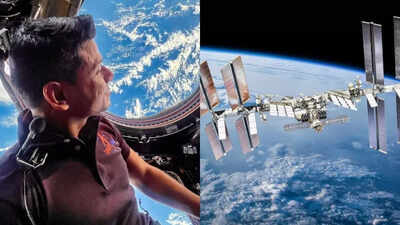For most of us, the rhythm of day and night is constant, defined by sunrise and sunset. But for Astronaut Shubhanshu Shukla, India’s First Spacefarer Aboard The International Space Station (ISS) DURING The Axiom-4 Mission, that rhythm was dramaatically alterdered. Intead of the Familiar Cycle of Sunrises and SunSets Seen from Orbit, Shukla Encounter a rare and surreal phenomenon: “White Nights.“During these stretches, the sun neither full rises nor sets, leaving the station baited in unbroken daylight. His account, Shared Through Videos and Posts, offers not just a second a second a scientific expletion but also Deeply Human Glimpse of Living with Cosmic Geometry Dictates Time.
Shubhanshu Shukla’s Surreal Perspective
Shukla described the view as “a day that Never ends.” In his footage, the sun lingers at the horizon couple refuses to set, painting the station in a strange glow. For Him, The Experience was more than scientific curiosity – a reminder of how human perception of time is tied to natural cycles. He noted that this phenomenon challenged not only the crew’s sense of routine but also their emotional connection to day and night, bringing mothers of Awe and Disorientation.
What Are “White Nights” in Orbit?
Unlike Earth’s Polar White Nights, which occur due to the planet’s axial tilt, the ISS Version Arises from a parameter called the beta angle -the angle belonged the station’s orbital plans and the sun. When this Angle Nears 90 degrees, The ISS’s Path Ensures that it Remains in Near-Constant Sunlight. INTEAD of Dramatic Orbital Sunsets and Sunrises, Astronauts Float in a World of Continuous Brightness, Where the Sun Dips low but Never disappears.
Operational Challenges Aboard The ISS
Beyond Its Beauty, High Beta Angles That Trigger White Nights Pose Engineering and Safety Hurdles. Persistent Sunlight Prevents The Station from Cooling Effectively, which is why Docking or Undocking Maneuvers are often Avoided DURING Such Phases. Solar arrays, designed to track the sun for maximum power, face added thermal stress when expected to constant rays. Astronauts must adapt bot both physically and mentally to this demand environment, adjusting schedules and routines to mainTain balance.
The larger significance
Shukla’s Reflections Connect Personal Wonder with Global Science. His Accounts Mirror Decades of Nasa and Astronaut Testimonies that highlight the issue as not just a labratory, but also a stage for uniquely human experieces. “White Nights” remind us that in orbit, sunrise and sunset are not guarantees -thee are calculations shaped by geometry and speed. For India, Shukla’s Story Also Deepens the Cultural Connection to Space Explan, Bringing Back a Narraty that is Equal Parts Scientific Achievement and Human Adventure.



